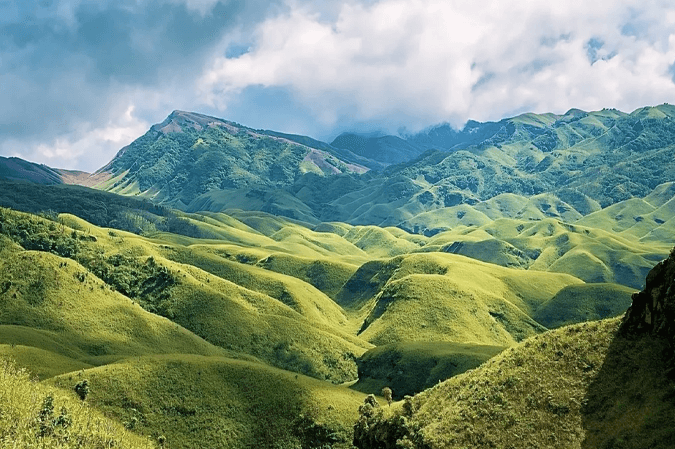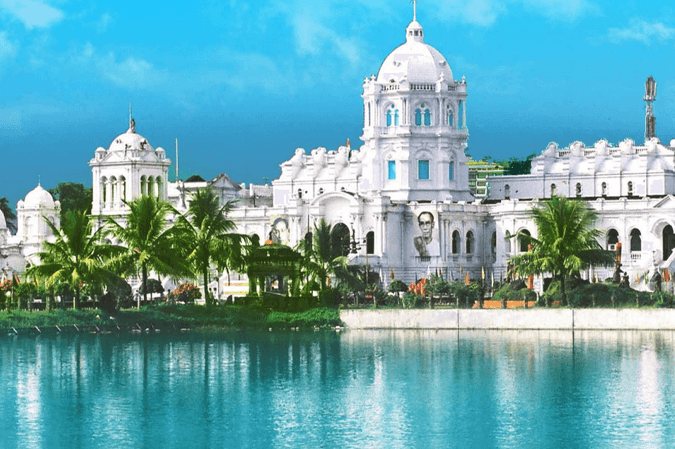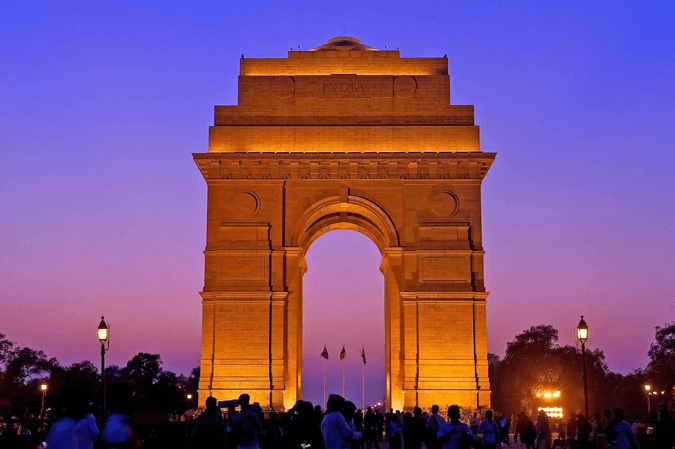History
Nagaland’s history is marked by its diverse tribal cultures and colonial interactions:
- Ancient and Medieval Period: The area now known as Nagaland has been inhabited by various Naga tribes for centuries. These tribes had their own distinct cultures and traditions, with little external influence until the British colonial period.
- Colonial Era: During the British rule, Nagaland was part of the Assam Province. The British established administrative control and conducted explorations in the region, leading to interactions with various Naga tribes.
- Post-Independence: Nagaland became a separate state on December 1, 1963, following the demands of the Naga people for self-determination and autonomy. The state was formed as part of the reorganization of states based on linguistic and ethnic lines.
Landscape and Area
Nagaland covers an area of 16,579 square kilometers. Its landscape includes:
- Hilly Terrain: The state is predominantly hilly, with steep slopes and rugged terrain. The Naga Hills and the Patkai Range are prominent features.
- Rivers: Major rivers include the Doyang, Tizu, and Zungki, which flow through the state and contribute to its rich biodiversity.
- Forests: Nagaland is covered with dense forests, which are home to a wide variety of flora and fauna.
Climatic Conditions
Nagaland experiences a subtropical climate with significant variation due to its elevation:
- Summer: Summers are generally mild, with temperatures ranging from 20°C to 30°C. The weather is relatively cool compared to other parts of India.
- Monsoon: The monsoon season brings heavy rainfall from June to September, contributing to the lush greenery of the region.
- Winter: Winters are cool, with temperatures dropping to around 10°C to 15°C in the lower regions, and even colder in the higher altitudes.
Historical Places
Nagaland boasts several historical and cultural landmarks:
- Kohima War Cemetery: A memorial dedicated to soldiers who fought in World War II during the Battle of Kohima, significant for its historical and emotional value.
- Kohima Village: Known for its traditional Naga architecture and as a cultural hub showcasing the lifestyle of the Naga people.
- Dimapur: The largest city in Nagaland, which has historical remnants from the Kachari civilization, including ancient ruins and temples.
- Shilloi Lake: A picturesque lake located in the Peren district, surrounded by lush hills and offering a serene environment.
Festivals
Nagaland is famous for its vibrant festivals, which reflect the rich cultural heritage of its tribes:
- Hornbill Festival: Held annually in December, this festival is known as the “Festival of Festivals” and showcases the diverse cultures of the Naga tribes through dance, music, and traditional crafts.
- Sekrenyi: Celebrated by the Angami Naga tribe in February, this festival marks the end of the agricultural season with traditional rituals and feasts.
- Aoling Festival: Celebrated by the Konyak Naga tribe in April, this festival involves elaborate ceremonies, traditional dances, and communal feasting.
- Moatsu: A post-harvest festival celebrated by the Ao Naga tribe in May, featuring traditional dances, songs, and social gatherings.
Environment
Nagaland’s environment is characterized by its rich biodiversity and natural beauty:
- Flora: The state is home to a wide variety of plant species, including medicinal herbs and timber species. The forests are a mix of tropical and subtropical vegetation.
- Fauna: The wildlife includes species such as the clouded leopard, black bear, and several species of birds and reptiles. Nagaland’s forests provide crucial habitats for these species.
- Conservation Efforts: The state has several protected areas, including wildlife sanctuaries and national parks, aimed at preserving its rich biodiversity.
Society and Culture
Nagaland’s society is diverse, with various tribes each having its own distinct culture:
- Tribes: Major tribes include the Angami, Ao, Konyak, Lotha, and Sumi, each with unique customs, languages, and traditions.
- Languages: While English is the official language, various Naga languages and dialects are spoken across the state, reflecting the linguistic diversity of the region.
- Cuisine: Naga cuisine is characterized by its use of local ingredients and spices. Dishes often include meat, fish, and fermented foods, with bamboo shoots and local herbs playing a significant role.
Interesting and Hidden Facts
- Unique Culture: The Naga tribes are known for their unique tattooing traditions and traditional headhunting practices, which have historical significance.
- Mysterious Lake: Shilloi Lake, located in a remote area, is surrounded by legends and local myths, adding to its allure as a hidden gem.
- Rich Biodiversity: Nagaland is part of the Indo-Burma biodiversity hotspot, known for its rich and varied wildlife and plant species.
Sources
- Government of Nagaland official website
- Encyclopaedia Britannica
- Nagaland Tourism Development Corporation
- Various environmental and cultural studies on Nagaland
- Historical and cultural reports from local sources
- Image Source: images.travelandleisureasia.com



